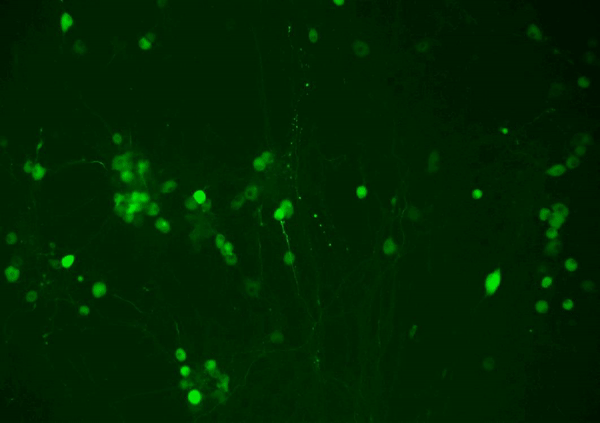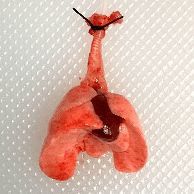Overview
We interrogate how cues from inside the body are sensed, encoded and addressed
within organs like the airways.
How does sensory feedback from within the body regulate physiology and behavior? What happens when this feedback breaks down? We employ a diverse experimental toolkit including neuroscience approaches such as optogenetics and calcium imaging, molecular approaches such as RNA sequencing and mouse genetics, and classical approaches such as surgical and pharmacologic manipulations to understand interoception and its various roles in mammalian health.
-
How does the body sense, encode and address challenges throughout life? Within our organs, specialized neurons monitor internal signals, providing moment-by-moment feedback to regulate our most basic bodily functions like breathing, heart rate, and inflammation—a process called “interoception.” These circuits are critical for life, yet we have only a rudimentary understanding of how they work. Our research program seeks to discover the receptors, circuits and reflexes that keep our bodies alive. To do this, we combine mouse genetics, neuroscience techniques like optogenetics, and physiology to reveal ground truths about interoceptive mechanisms. We principally study the mouse vagus nerve, which innervates the heart, lungs and digestive tract and acts as a major body-brain conduit.
-
The respiratory tract is continuously exposed to inhaled hazards throughout life. Irritants like smoke, pollen and virus pose risks to gas exchange, and their sustained exposure is linked to deadly global diseases including COPD, asthma, and lung cancer. Like most organs, the airways are richly innervated by neurons that coordinate local and systemic sickness responses to these insults, yet their contributions to disease are frequently overlooked. We explore the factors that disrupt neuronal feedback, and how changes in autonomic signaling contribute to organ pathology. Using mouse lung disease models, we investigate how neurons adapt to, record, and drive tissue dysfunction. These efforts pave the way for new therapies to improve human health, particularly in the context of lung disease.
-
Breathing is intricately connected to emotional states, as recognized for centuries in various cultures and practices. This relationship is bidirectional—for example, when we experience fear, sadness, boredom, humor, or sexual arousal, our bodies instinctively respond with changes in breathing pattern. Conversely, deep breaths induce a state of calmness, while suffocation is powerfully distressing. What is the neuroanatomical basis for this connection? Can we define the interoceptive circuits that shape stress responses, and target specific body-to-brain pathways to improve mood or anxiety? We combine molecular/genetic tools and mouse behavioral models to untangle the enigmatic crosstalk between interoception and higher aspects of cognition.

Cultured mouse vagal neurons expressing GCaMP, responding to stimuli in a dish.

Immunostaining of sensory innervation (magenta) along the passages of the lungs, showing contacts with immune cells (blue).

Explanted mouse lungs under ventilation.

